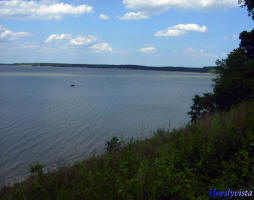 Low level exposure to arsenic in drinking water may pose cancer risk
Low level exposure to arsenic in drinking water may pose cancer risk
|
|
||||||||||||||
| In this issue | ||||||||||||||
Low level exposure to arsenic in drinking water may pose cancer risk Long-term, low level exposure to arsenic in drinking water may increase a person’s risk of skin cancer, according to a new study conducted in Hungary, Romania and Slovakia. The study suggests that levels of inorganic arsenic previously thought to be harmless may have a carcinogenic effect over a longer period of time. (more...) Download article (PDF) |
||||||||||||||
|
|
||||||||||||||
|
Future challenges for water
hazard early warning systems Researchers have reviewed early warning systems (EWS) for water hazards, such as flash flooding, landslides, river flooding and coastal flooding. They conclude that EWS continue to provide valuable information to allow emergency services and local communities prepare for water-related natural hazards. However, there are a number of challenges to address to gain the most benefit from EWS. (more...) Download article (PDF) |
||||||||||||||
|
|
||||||||||||||
|
Fungi show strong potential
to control crane fly pests Crane fly larvae cause considerable damage to agricultural crops and young trees throughout Europe. New research has demonstrated that certain strains of fungi have significant potential to control crane fly infestations, thus reducing the use of chemical insecticides and enabling more environmentally-friendly strategies for pest control. (more...) Download article (PDF) |
||||||||||||||
|
|
||||||||||||||
|
Better monitoring of low
level pollutants needed to protect marine life A new study of pollutants in Mediterranean coastal waters assesses the risks posed by difficult-to-detect chemicals present at low concentrations. Coastal monitoring programmes may be required to control discharges of some of these pollutants, which, at current levels, could be harmful to sensitive marine creatures. (more...) Download article (PDF) |
||||||||||||||
|
|
||||||||||||||
|
CCS has health and
ecosystem benefits, but depletes natural resources A new study has concluded that the benefits of carbon capture and storage (CCS) to human health and ecosystems from reduced climate change related impacts considerably outweigh any negative impacts from using the technology in power plants. However, CCS has a large impact on the depletion of natural resources. (more...) Download article (PDF) |
||||||||||||||
|
|
||||||||||||||
|
Predicting the risk of pine
forest decline in the Mediterranean A new study has identified the factors that cause deterioration of Mediterranean pine plantations, to develop a model of that can predict the risk of forest decline to help inform forests management strategies under a changing climate. It suggests that loss of needles is the most useful predictor of decline for the species studied. (more...) Download article (PDF) |
||||||||||||||
|
|
||||||||||||||
|
The contents and views included in this News Alert are based on independent, peer-reviewed research and do not necessarily reflect the position of the European Commission. |
||||||||||||||
|
|
||||||||||||||
| Beyond this News Alert | ||||||||||||||
|
||||||||||||||
| Full articles | ||||||||||||||
|
Low level exposure to arsenic in drinking water may pose cancer risk Long-term, low level exposure to arsenic in drinking water may increase a person’s risk of skin cancer, according to a new study conducted in Hungary, Romania and Slovakia. The study suggests that levels of inorganic arsenic previously thought to be harmless may have a carcinogenic effect over a longer period of time. In food and water, arsenic is bound up in organic (carbon-containing) or inorganic molecules. Organic compounds are the less toxic of the two. Much of the arsenic in shellfish, for example, is organic arsenobetaine, which is considered to pose little risk. Inorganic arsenic is a recognised carcinogen, but until recent years, exposure to low levels in food and drinking water had been considered safe. Evidence accumulating in recent decades suggests that people exposed to even very low levels of inorganic arsenic over many years have an increased risk of certain cancers, including bladder, lung and skin cancer. Lower concentrations of the toxic compounds are thought to have different effects on cells and chromosomes compared to higher concentrations, but both may lead to cancer. The new study, conducted under the EU ASHRAM project1, supports a link between basal cell carcinoma – a type of skin cancer – and long-term exposure to inorganic arsenic at levels below 100 micrograms per litre in drinking water. The researchers assessed 1069 people living in Slovakia, Hungary and Romania, in 2003 and 2004, to understand the effects of very low levels of inorganic arsenic exposure, focusing on participants exposed to a lifetime average concentration of below 40 micrograms per litre. A total of 529 of the participants were people diagnosed with basal cell carcinoma. They were compared to 540 other participants who had not been diagnosed with the illness, and who were matched for age, sex, the amount of time they spent in the sun, skin complexion and other factors that might influence their risk of skin cancer. Several different measures of exposure to inorganic arsenic were tested, with each showing a statistically significant association with skin cancer when adjusted for age, sex and the countries that participants lived in. Lifetime average water concentration was the strongest association with basal cell carcinoma; participants diagnosed with the illness were more likely to have been exposed to higher levels of inorganic arsenic in drinking water over their lifetime. Results remained similar even when adjusted for exposure to the sun and skin complexion. In the EU, drinking water concentrations are limited to 10 micrograms per litre under the Drinking Water Directive2, as measured at the consumer tap. Member States can set lower limits but not higher, except when they ask for temporary derogations. It is estimated that in the last 30 years, more than 1 million people living in the regions covered by this study used water containing inorganic arsenic at concentrations between 10 and 100 micrograms per litre. Additional Information Independently from this study, the European Commission's Scientific Committee on Health and Environmental Risks (SCHER)3 issued an opinion in 2010 concluding that a derogation for drinking water containing up to 50 micrograms per litre for up to 3 years should not result in any, or at most only very low, additional health risks in the adult population. However, a minority opinion, accompanying that opinion, comments that the health risks from arsenic in drinking water (in particular from levels over 20 micrograms per litre) to children under 18 years and non-breast fed infants are higher than for adults.
|
| Contact information |
Email: tony.fletcher@lshtm.ac.uk |
|---|---|
| News type | Inbrief |
| File link |
http://ec.europa.eu/environment/integration/research/newsalert/pdf/297na1.pdf |
| Source of information | Leonardi, G. Vahter, M., Clemens, F. et al. (2012). Inorganic Arsenic and Basal Cell Carcinoma in Areas of Hungary, Romania and Slovakia: A Case-Control Study. Environmental Health Perspectives. 120(5): 721-726. DOI: 10.1289/ehp.1103534. The study is free to view at: |
| Keyword(s) | EU-WFD |
| Subject(s) | ANALYSIS AND TESTS , DRINKING WATER , DRINKING WATER AND SANITATION : COMMON PROCESSES OF PURIFICATION AND TREATMENT , HEALTH - HYGIENE - PATHOGENIC MICROORGANISM |
| Relation | http://ec.europa.eu/research/environment/pdf/env_health_projects/chemicals/c-ashram.pdf |
| Geographical coverage | n/a |
| News date | 17/09/2012 |
| Working language(s) | ENGLISH |
 you are not logged in
you are not logged in





